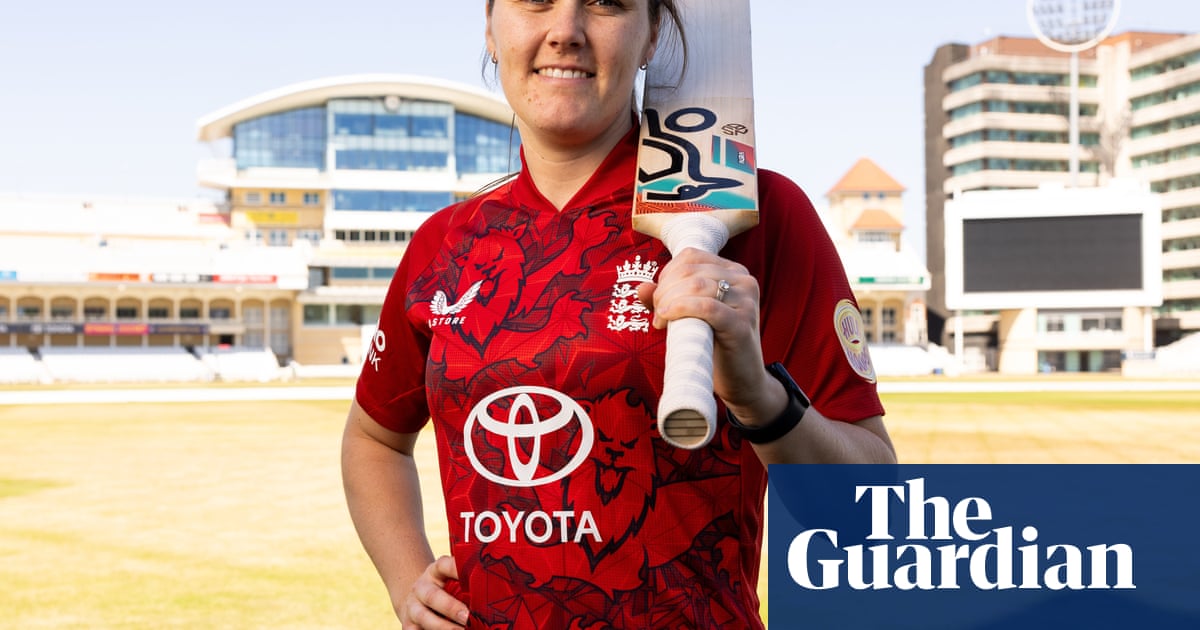England’s 16-0 whitewash at the hands of Australia earlier this year sparked widespread calls for change. On Tuesday, as the new captain Nat Sciver-Brunt gave her first press conference sinceshe was appointedlast month, the curtain finally rose just enough to give the public a tantalising glimpse at a very new-look England setup.
Twenty-four hours previously, the head coach, Charlotte Edwards, and the newly chosen national selector (whose identity is yet to be revealed) had sat down to select England’s squad to face West Indies in the series beginning on 21 May – without Sciver-Brunt’s input.
Edwards, Sciver-Brunt revealed, has taken the decision to remove her new skipper from all formal selection committees. “My views are heard pre-meeting,” Sciver-Brunt said. “I haven’t been part of the big meeting. The new national selector will take that role, to lighten the burden of being captain.”
Perhaps Edwards simply felt that Sciver-Brunt – who in the past six weeks has watched her wife give birth, undergone electroshock therapy for an achilles injury and received a phone call from Edwards to tell her she was about to become the new England captain – already had enough to be going on with?
Except that this is a permanent change. In fact, it is the clearest signal yet that this new era of England women’s cricket will be driven forward by Edwards: she will set the standards and write the plans, and the captain will implement them. Sciver-Brunt described her role as “focusing on pitch things and winning games for England”. That is a 180-degree shift from her predecessor, Heather Knight, whose voice on and off the pitch was heard more loudly than either of England’s previous head coaches, Jon Lewis and Lisa Keightley.
If the world really is divided into Type As (ambitious and driven) and Type Bs (carefree and even-tempered), then Sciver-Brunt is an archetypal Type B, recently described by Edwards as “laid-back and unassuming”. Edwards wanted a captain who could lead from the front: Sciver-Brunt emerged from the wreckage of last winter’s Ashes still one of the world’s leading all-rounders. But the leadership style of a Type B is likely to be more focused on inspiring and motivating those around them than imposing decisive plans.
Sciver-Brunt is a textbook example. “As a leader, I want to empower people to be the best version of themselves,” she said last week. “As a group, I want us all to work really hard for each other and the team. I’ll be having conversations with everybody to work out the best way to work with them when we’re on the pitch and what they would need from me to help them best work.”
There are two problems for the softly spoken Sciver-Brunt. The first is that she takes office at a nadir for England women’s cricket: the scrutiny-genie of last winter’s Ashes is never getting put back in the bottle. Asked what she was most dreading about the England captaincy, her answer came instantly: “Press conferences.” She might well prefer a more limited role, where she can focus purely on the cricket without having to answer difficult questions from journalists – but that is not the one on offer any more.
Sign up toThe Spin
Subscribe to our cricket newsletter for our writers' thoughts on the biggest stories and a review of the week’s action
after newsletter promotion
The second is that the 32-year-old will be required to deal with the unprecedented dynamic of her Type-A predecessor Knight remaining in the dressing room as she takes charge of her new team. “I’m going to be signing her up for a few coffees when we get on tour and getting into a few details of captaincy and how she found it,” Sciver-Brunt said – a statement which did nothing to dispel concerns that Knight may yet find a new role as backseat driver of an England team she led for almost a decade.
But anyone with real concerns need look no further than the reassuring figure of Edwards. Is she likely to allow Knight to lead by stealth? No. Will she tolerate a poor team culture? Also no. Edwards has worked with Sciver-Brunt long enough – most recently at Mumbai Indians in the Women’s Premier League – to know exactly the kind of leader she will make. The key to understanding her choice of captain is this: Edwards – herself a Type A, if ever there was one – has picked the player who will best complement her own coaching style. It’s as simple, and as complicated, as that.
